CORPORATE ACTION: Unilever
Unilever Joins Calls For Legally Binding Treaty Against Plastic Pollution
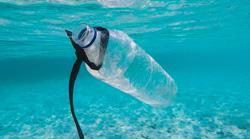 Unilever helped establish the Business Coalition for a Global Plastics Treaty because the company, along with others like it, believes that voluntary initiatives are not enough to stop plastic waste and pollution. The company and its partners are calling for a legally binding global treaty against plastic pollution and waste. Data from the OECD revealed that plastic production and plastic waste more than doubled, with only 9 percent getting recycled. Also, plastic waste production is expected to almost triple by 2060, with less than 20 percent being recycled and about 50 percent ending up in landfills. [Image Credit: © Brian Yurasits on Unsplash]
Unilever helped establish the Business Coalition for a Global Plastics Treaty because the company, along with others like it, believes that voluntary initiatives are not enough to stop plastic waste and pollution. The company and its partners are calling for a legally binding global treaty against plastic pollution and waste. Data from the OECD revealed that plastic production and plastic waste more than doubled, with only 9 percent getting recycled. Also, plastic waste production is expected to almost triple by 2060, with less than 20 percent being recycled and about 50 percent ending up in landfills. [Image Credit: © Brian Yurasits on Unsplash]
Unilever Vietnam Partners With DUYTAN Recycling To Train Waste Collectors On Plastic Classification
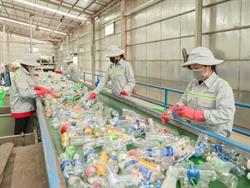
Unilever Vietnam partnered with DUYTAN Recycling Company to host the training program, “Classifying Plastic for Scrap Purchasing Facilities and Giving Gifts to Employees”, at several plastic waste collection stations in the country. As part of the Plastic Collection and Recycling collaboration between the companies, the training program aims to raise awareness and capacity of waste collectors within DUYTAN Recycling’s value chain. [Image Credit: © DUYTAN Plastic Recycling]
CORPORATE ACTION: Other
French Watchdog Plans To Fine Unilever, Other Companies For BPA Use In Packaging
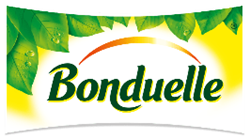 France’s anti-trust agency, L’Autorité de la Concurrence, is expected to impose fines of €20 million, or US$21.8 million, on French companies, including Bonduelle and Unilever, for allegedly conspiring to cover up the use of bisphenol A in packaging. Investigative news agency L’informé’s report also hints at Unilever’s likely involvement, along with the French National Association of Food Industries. [Image Credit: © Bonduelle]
France’s anti-trust agency, L’Autorité de la Concurrence, is expected to impose fines of €20 million, or US$21.8 million, on French companies, including Bonduelle and Unilever, for allegedly conspiring to cover up the use of bisphenol A in packaging. Investigative news agency L’informé’s report also hints at Unilever’s likely involvement, along with the French National Association of Food Industries. [Image Credit: © Bonduelle]
Center For The Circular Economy Report Presents Data On US Consumer Reuse Perspectives
 Closed Loop Partners’ Center for the Circular Economy released the report, “Unpacking Customer Perspectives on Reusable Packaging,” in partnership with the US Plastics Pact. According to the report, continuing education and clear communication are necessary to inform customers about reuse logistics and ensure adoption on a wider scale. Also, while technology can make reuse tracking simpler, too much technology on the frontend can intimidate customers. Proponents can ensure that reuse systems secure the “intended impact” by providing design choices that “balance utility, sustainability, and appeal”. [Image Credit: © Closed Loop Partners]
Closed Loop Partners’ Center for the Circular Economy released the report, “Unpacking Customer Perspectives on Reusable Packaging,” in partnership with the US Plastics Pact. According to the report, continuing education and clear communication are necessary to inform customers about reuse logistics and ensure adoption on a wider scale. Also, while technology can make reuse tracking simpler, too much technology on the frontend can intimidate customers. Proponents can ensure that reuse systems secure the “intended impact” by providing design choices that “balance utility, sustainability, and appeal”. [Image Credit: © Closed Loop Partners]
Marks and Spencer Expands Product Refill Scheme To 19 More UK Stores
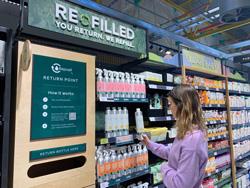
Marks & Spencer is expanding its Refilled product refill program for its private-label cleaning and laundry products. The UK retailer is working with Reposit in implementing the program designed to reduce and remove plastic packaging and provide customers with more sustainable options. According to the retailer, the scheme will be introduced in 19 other stores after the success of the trial in six stores in 2023. [Image Credit: © Marks and Spencer Group plc]
SC Johnson And Liverpool FC Celebrate Fans Who Supported Plastic Bottles Recycling Campaign
 SC Johnson, the official sustainability partner of Liverpool Football Club in the UK, is celebrating supporters of the partners’ plastic bottles recycling campaign. As part of the celebration, the names of 12,848 fans will be temporarily sprayed on a road near the Anfield Stadium. The number represents the average number of plastic bottles that the fans recycled at each soccer game at the stadium. [Image Credit: © S.C. Johnson & Son Inc.]
SC Johnson, the official sustainability partner of Liverpool Football Club in the UK, is celebrating supporters of the partners’ plastic bottles recycling campaign. As part of the celebration, the names of 12,848 fans will be temporarily sprayed on a road near the Anfield Stadium. The number represents the average number of plastic bottles that the fans recycled at each soccer game at the stadium. [Image Credit: © S.C. Johnson & Son Inc.]
CAMPAIGNS, COMMITMENTS & NGOs
Consumers Beyond Waste Initiative Seeks To Promote Reuse Models As Tools To Fight Plastic Waste
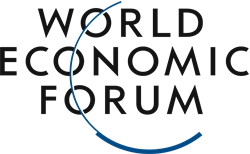 The World Economic Forum’s Consumers Beyond Waste initiative aims to promote reuse models to eliminate plastic waste. First launched in January 2019, the initiative includes leading start-ups, consumer companies, nonprofits and governments as partners in pushing for “responsible consumption and sustainable shopping models”. By reusing just 10 percent of plastic products, the amount of plastic waste reaching the ocean can be reduced by half. At first, the group focused on supporting innovators, including Loop and Algramo, during the development phase of reuse models. [Image Credit: © World Economic Forum]
The World Economic Forum’s Consumers Beyond Waste initiative aims to promote reuse models to eliminate plastic waste. First launched in January 2019, the initiative includes leading start-ups, consumer companies, nonprofits and governments as partners in pushing for “responsible consumption and sustainable shopping models”. By reusing just 10 percent of plastic products, the amount of plastic waste reaching the ocean can be reduced by half. At first, the group focused on supporting innovators, including Loop and Algramo, during the development phase of reuse models. [Image Credit: © World Economic Forum]
CONSUMER & PUBLIC OPINION
EU Plastic Waste Export Ban Will Kill Europe’s Recycling Market, Belgian Recycling Group Claims
.jpg&width=250&height=198)
Valipac said that the European Union’s ban on exports of plastic waste can cause a collapse of the EU market for the collection and recycling of plastic packaging. According to the Belgium-based plastic recycling industry association, Europe lacks the capacity to recycle collected plastic waste and demand for recyclate could collapse. Also, Valipac claims the ban will hinder efforts to achieve a circular economy. [Image Credit: © Nareeta Martin on Unsplash]
POLICY, REGULATION & LEGAL
France Bans Single-Use Plastic Packaging For Fresh Produce By January 1, 2024
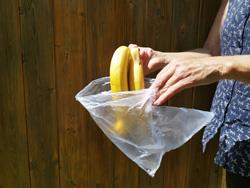
France is set to enact on January 1 a law banning the use of single-use plastic for packaging of fresh produce. The law is part of the country’s efforts to eliminate single-use plastic packaging by 2040. It aims to reduce single-use plastic packaging and ban the use of plastic film and netting. According to a France24 report, a third of the country’s fresh produce comes packaged in single-use plastic. [Image Credit: © Anna Szentgyörgyi on Unsplash]
RESEARCH
EU-Style Plastic Waste Tax Can Raise AUD1.5 Billion For Australia Each Year, Research Shows
 The Australia Institute said the Australian government could raise AUD1.5 billion each year by imposing a plastic packaging waste tax on companies that import or manufacture plastic packaging. According to the think tank, research shows that a tax on plastic packaging like that of the European Union could generate AUD1,300 per tonne of virgin or unrecycled plastic. Also, the organization said that only 14 percent of the 1.121 million tonnes of plastic packaging waste the country produces each year is recycled, composted or turned into energy. [Image Credit: © The Australia Institute]
The Australia Institute said the Australian government could raise AUD1.5 billion each year by imposing a plastic packaging waste tax on companies that import or manufacture plastic packaging. According to the think tank, research shows that a tax on plastic packaging like that of the European Union could generate AUD1,300 per tonne of virgin or unrecycled plastic. Also, the organization said that only 14 percent of the 1.121 million tonnes of plastic packaging waste the country produces each year is recycled, composted or turned into energy. [Image Credit: © The Australia Institute]
Study Finds Microplastics In 88 Percent Of Proteins Consumed By Americans
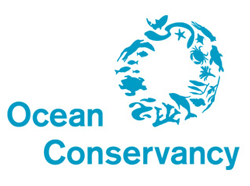 Microplastic particles were found in 88 percent of samples of protein foods destined for US consumers, according to a study by researchers at the Ocean Conservancy and the University of Toronto. Published in January 2024 in the journal “Environmental Pollution”, the study looked at samples from 16 different protein types, including seafood, pork, beef and chicken, as well as plant-based protein sources. Also, the study found evidence that highly processed foods, such as tofu and chicken nuggets, contained more microplastics, suggesting that food processing is a likely source of microplastic contamination. For all samples, 44 percent of microplastics identified were fibers, while 30 percent were plastic fragments. [Image Credit: © Ocean Conservancy]
Microplastic particles were found in 88 percent of samples of protein foods destined for US consumers, according to a study by researchers at the Ocean Conservancy and the University of Toronto. Published in January 2024 in the journal “Environmental Pollution”, the study looked at samples from 16 different protein types, including seafood, pork, beef and chicken, as well as plant-based protein sources. Also, the study found evidence that highly processed foods, such as tofu and chicken nuggets, contained more microplastics, suggesting that food processing is a likely source of microplastic contamination. For all samples, 44 percent of microplastics identified were fibers, while 30 percent were plastic fragments. [Image Credit: © Ocean Conservancy]
Copyright 2025 Business360, Inc.

